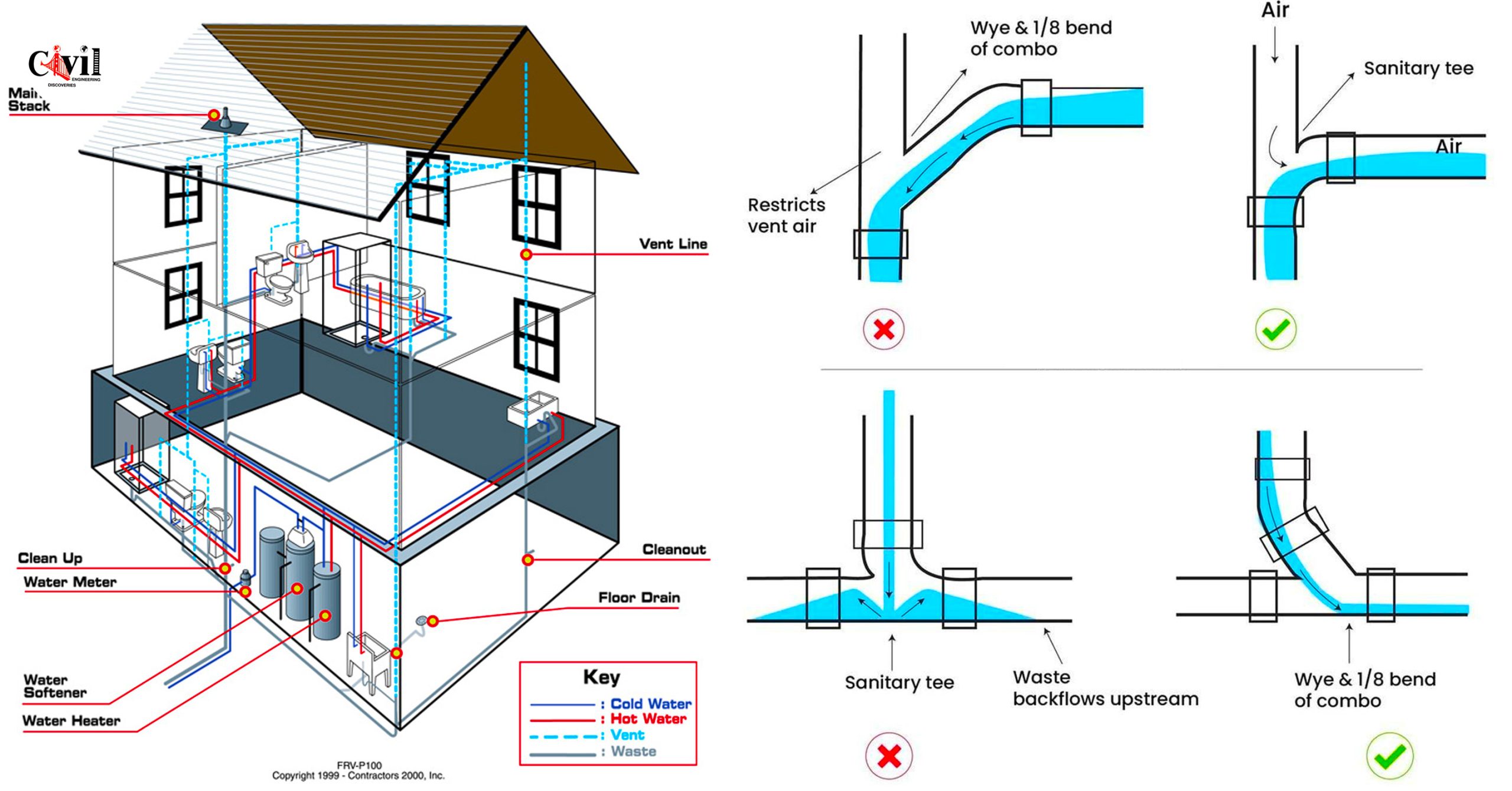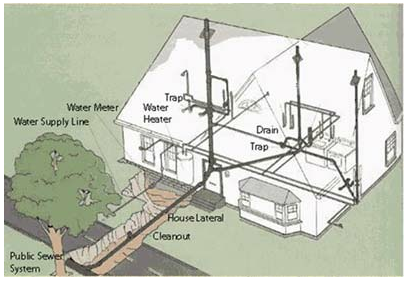Key Components of Your Home's Plumbing System
Key Components of Your Home's Plumbing System
Blog Article
We've stumbled on this great article pertaining to Understanding Your Home's Plumbing Anatomy directly below on the net and think it made sense to share it with you here.

Understanding just how your home's plumbing system works is crucial for every single property owner. From supplying clean water for drinking, food preparation, and bathing to securely getting rid of wastewater, a well-kept plumbing system is vital for your family's health and wellness and comfort. In this thorough guide, we'll explore the complex network that makes up your home's pipes and offer tips on upkeep, upgrades, and handling usual concerns.
Introduction
Your home's pipes system is more than simply a network of pipelines; it's a complicated system that ensures you have accessibility to tidy water and efficient wastewater elimination. Knowing its elements and how they collaborate can assist you prevent expensive repairs and make sure everything runs efficiently.
Basic Components of a Plumbing System
Pipelines and Tubing
At the heart of your pipes system are the pipelines and tubing that lug water throughout your home. These can be made of different materials such as copper, PVC, or PEX, each with its advantages in terms of longevity and cost-effectiveness.
Fixtures: Sinks, Toilets, Showers, etc.
Components like sinks, toilets, showers, and bathtubs are where water is utilized in your house. Understanding exactly how these components connect to the plumbing system assists in detecting problems and planning upgrades.
Valves and Shut-off Factors
Valves control the circulation of water in your pipes system. Shut-off valves are crucial during emergency situations or when you require to make repairs, permitting you to isolate parts of the system without interfering with water flow to the whole home.
Supply Of Water System
Key Water Line
The primary water line attaches your home to the community water or an exclusive well. It's where water enters your home and is distributed to various components.
Water Meter and Stress Regulator
The water meter procedures your water use, while a pressure regulatory authority makes sure that water flows at a secure stress throughout your home's plumbing system, preventing damage to pipelines and fixtures.
Cold Water vs. Hot Water Lines
Recognizing the difference in between cold water lines, which supply water straight from the major, and hot water lines, which bring warmed water from the water heater, assists in troubleshooting and planning for upgrades.
Water drainage System
Drain Pipeline and Traps
Drain pipelines lug wastewater away from sinks, showers, and commodes to the sewer or sewage-disposal tank. Traps stop drain gases from entering your home and additionally catch debris that can cause clogs.
Ventilation Pipelines
Air flow pipelines permit air right into the drainage system, protecting against suction that could slow drain and trigger catches to vacant. Proper ventilation is crucial for maintaining the integrity of your plumbing system.
Significance of Appropriate Water Drainage
Making certain correct water drainage stops back-ups and water damages. Consistently cleaning drains and maintaining traps can avoid pricey fixings and expand the life of your pipes system.
Water Furnace
Sorts Of Water Heaters
Hot water heater can be tankless or traditional tank-style. Tankless heating systems heat water on demand, while tanks store heated water for immediate use.
Upgrading Your Pipes System
Reasons for Upgrading
Updating to water-efficient components or changing old pipelines can improve water top quality, lower water expenses, and raise the worth of your home.
Modern Plumbing Technologies and Their Advantages
Check out technologies like wise leak detectors, water-saving commodes, and energy-efficient water heaters that can conserve cash and decrease ecological effect.
Cost Factors To Consider and ROI
Determine the upfront costs versus lasting cost savings when taking into consideration pipes upgrades. Many upgrades spend for themselves through reduced utility costs and fewer fixings.
Exactly How Water Heaters Connect to the Plumbing System
Comprehending how hot water heater attach to both the cold water supply and hot water circulation lines assists in detecting issues like inadequate hot water or leakages.
Upkeep Tips for Water Heaters
On a regular basis flushing your hot water heater to remove sediment, inspecting the temperature level settings, and evaluating for leakages can extend its life-span and improve power efficiency.
Typical Pipes Issues
Leakages and Their Reasons
Leaks can happen due to aging pipelines, loosened fittings, or high water stress. Addressing leakages without delay avoids water damages and mold and mildew development.
Blockages and Clogs
Blockages in drains pipes and bathrooms are often triggered by flushing non-flushable products or a buildup of oil and hair. Using drainpipe displays and being mindful of what drops your drains can protect against blockages.
Indicators of Plumbing Issues to Watch For
Low tide stress, sluggish drains pipes, foul odors, or unusually high water expenses are indicators of prospective pipes troubles that must be addressed quickly.
Pipes Upkeep Tips
Regular Evaluations and Checks
Schedule annual plumbing evaluations to capture concerns early. Seek indicators of leakages, corrosion, or mineral accumulation in taps and showerheads.
DIY Maintenance Tasks
Basic tasks like cleaning faucet aerators, checking for bathroom leaks utilizing color tablet computers, or protecting revealed pipelines in chilly environments can protect against major pipes issues.
When to Call an Expert Plumbing Professional
Know when a pipes concern requires expert know-how. Trying complex repair work without appropriate understanding can bring about even more damage and higher fixing costs.
Tips for Minimizing Water Use
Straightforward behaviors like taking care of leakages without delay, taking shorter showers, and running complete lots of washing and dishes can conserve water and lower your utility bills.
Eco-Friendly Plumbing Options
Consider sustainable pipes products like bamboo for floor covering, which is durable and eco-friendly, or recycled glass for countertops.
Emergency situation Readiness
Actions to Take Throughout a Pipes Emergency situation
Know where your shut-off shutoffs lie and just how to switch off the water in case of a ruptured pipeline or major leakage.
Value of Having Emergency Situation Get In Touches With Useful
Keep contact information for local plumbers or emergency solutions conveniently offered for fast reaction during a plumbing situation.
Ecological Effect and Conservation
Water-Saving Fixtures and Devices
Mounting low-flow faucets, showerheads, and toilets can dramatically minimize water usage without sacrificing efficiency.
Do It Yourself Emergency Situation Fixes (When Appropriate).
Temporary solutions like making use of duct tape to spot a leaking pipeline or putting a container under a dripping tap can lessen damage until a specialist plumbing technician arrives.
Verdict.
Comprehending the composition of your home's plumbing system empowers you to keep it properly, saving money and time on repair services. By following normal maintenance regimens and staying notified concerning modern pipes modern technologies, you can ensure your pipes system operates effectively for several years to come.
HOW YOUR PLUMBING SYSTEM WORKS
Which Pipes Do What?
Blue lines = fresh water supply entering the building Red lines = hot water supply entering the building Grey lines = pipes carrying waste away from the building and venting pipes carrying gases away from the building (through the roof) YOUR MAIN PLUMBING SYSTEMS
There are two main plumbing systems that support your home s basic plumbing needs one that brings clean water into your home, and one that sends dirty water away from your home. Connected to the toilet, bath, shower, and other faucets in your home, these two systems keep your water flowing in the right directions.
ACCESSING FRESH WATER
Fresh and clean water is brought into your home through the main water supply line . Filtered through one pipe, this water is pressured to flow into the various fixtures in your home at any given time.
This water can be sourced from a well located on your property, a pond or river (mostly cottages), or, as in most cases, from the city s municipal water treatment centre. However, it is important to note that water that is untreated, such as the water siphoned from ponds or rivers, may not be safe to drink. Personal water supplies always need to be treated for hardness and contaminants before consumed.
MUNICIPAL WATER SUPPLIES
Improve taste and odour Remove sediment Eliminate hardness Reduce chlorine COLD WATER SUPPLY VS. HOT WATER SUPPLY
Cold water flows into your home or building through the service line, which then distributes hot or cold water to your fixtures. This line is most commonly run through a central column that runs floor to floor. Hot water runs in short and straight pipes as the longer the pipeline, the more heat that will be lost in the transfer. Having shorter pipes also allows residents to access hot water more quickly.
WASTE WATER SYSTEM
Your wastewater system is divided into two parts pipes that send wastewater away from your home and venting pipes that send sewer gas away from your home. Sewage water travels through pipes that flush the water and waste towards local sewers that are operated and managed by your city or town. Most sewer systems rely on gravity to move the wastewater to where it needs to go.
The further away from your toilet or sink, the larger wastewater pipes become. This allows for waste to be disposed of from various parts of your home or business at once without pipe blockages. The angle and flow of these pipes are also essential for keeping your waste pipes clear of build up.
https://harrisplumbing.ca/how-your-home-plumbing-system-works/

Hopefully you liked our article about Plumbing Installation 101: All You Need to Know. Thank you so much for taking time to read our blog. Sharing is nice. You just don't know, you may just be doing someone a favor. We cherish your readership.
Schedule An Appointment Report this page